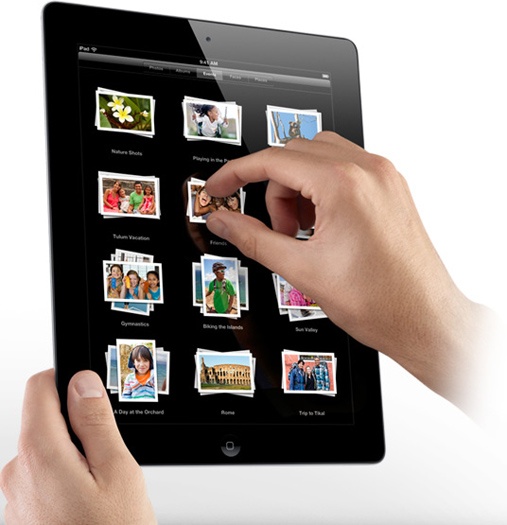
by Marianna Muscat | Mar 14, 2019 | Mobile Solutions
If you want to make more sales from both new and existing customers and generate exponential profits, then going mobile is not an option. In order to achieve market domination with a greater return on investment while having more free time, you need to reach a hot market on the go.
The majority of internet users now use their mobile phones to browse the internet, find information and effectively make buying decisions. When they land on your website via video, ads, social media, blogs, press releases and other referring sources, their experience must be mobile-friendly, easy to view, optimised and formatted with compelling and professional content. Here are three quick reasons why your local business needs to go mobile:
- Mobile is everywhere,
- Mobile converts clicks to customers, and
- Not being mobile actually has a high cost.
Internet users are increasingly turning away from websites that offer a poor mobile experience and over half of them won’t recommend a business if it has a poorly designed mobile site. Your potential clients are getting referrals from friends and browsing on their phones, so make sure they have a great experience when they reach your website.
Mobile marketing goes far beyond optimising your website. There are many different strategies that you can incorporate into your digital marketing campaign, including:
- Mobile App Development,
- Mobile Messages, And
- Push Notifications.
WSI OMS can help you with your entire campaign from start to finish. So, if you need help with your mobile marketing or digital marketing campaign, then contact WSI OMS today.

by admin | Oct 8, 2018 | Mobile Solutions
2018 has seen the rise of the Progressive Web App (PWA). In short, a PWA is a mobile app downloaded from a web application. They load like regular web pages/websites but feel and behave like native mobile apps. In this mobile-first era, PWAs are quickly becoming the next best thing for an optimised user experience. In fact, companies like Forbes and Alibaba have turned to PWAs to increase their conversion rates. Here are some of the ins-and-outs of progressive web apps and why they could be great for your business:
You don’t need an app store to download a PWA. Although, search engines see them as apps, installing them simply involves visiting a site and adding the progressive web app to your device’s home screen. Since PWAs are accessed via search engines, SEO can be used to make the app more discoverable – a great cost-cutting exercise.
- Integrated User Experience
Much like a mobile app, PWAs can send push notifications, and have access to your device’s functionalities. They also offer an immersive full screen experience – without the URL bar floating on the top.
According to Google, 53% of users will abandon a site if it takes longer than 3 seconds to load! When accessed from your device’s home screen, PWAs load instantly – even in poor network conditions. They respond quickly to user interactions and also function offline, just like a native mobile app. Because of this, PWAs use less data.
PWAs render well on multiple devices, including desktop, tablets and soon will fit smaller interfaces like smartwatches.
Progressive web apps can update themselves automatically, which eliminates the fuss of having your updates approved by an app store.
If you need digital marketing services for your business, contact WSI OMS today.

by Marianna Muscat | Jun 7, 2016 | Mobile Marketing, Mobile Solutions
In a report published by eMarketer, it was predicted that online spend via mobile devices would account for more than 60% of all online spend in 2016 (in the US). While that seems like a neon arrow for marketers looking for advertising platforms, there are a few problems that marketers face:
- The need to develop creative specifically for mobile and the mobile viewing experience
- Accurate cross-device attribution and frequency management
- Allocating optimal levels of budget to mobile
There are big rewards and opportunities for marketers willing to invest in tools needed to succeed at mobile marketing, but the key is to realise that mobile requires different creative, expertise and measurement systems from other channels.
Some things to remember when developing material for mobile marketing, is that most mobile phones are held in the vertical position, so videos should mimic that orientation. Another factor is the need for cross-device measurement technology – a third-party technology platform that tracks, weights and measure the role of mobile across all devices is a necessary investment for those wanting to understand the impact that mobile has on the consumer buying decision. Difficulty in measuring ROI has been a major factor holding back the growth in mobile ads.
Email, in addition to being the top mobile activity, is the third biggest driver of revenue on tablets and mobile phones. Marketing emails should be mobile-friendly, as well as being short and to-the-point, encouraging the reader to find out more at a later time.
Geotargeting – a phone’s location service is used to send geo-relevant content to consumers – is a trend worth considering. Many retailers have adopted the location-aware apps and beacons, which allow them to send relevant information and promotions based on the consumer location.
Creating and deploying mobile apps is another way to drive interactions and engagement with customers. Push notifications, relevant updates and gamification are ways to keep customers engaged once they have downloaded the app.
SMS marketing tools still work well, allowing you to reach smartphone users with targeted deals. These can have engagement rates up to eight times higher than email marketing.
With the right mobile marketing strategy, tools and team, marketers can really succeed in this segment of the market. For more on mobile marketing and developing a marketing strategy, contact us – we can craft a varied approach to reach your customers and maximise your budget.

by Marelise da Silva | May 12, 2016 | Mobile Marketing, Mobile Solutions
In a word, yes. Latest statistics (which change almost daily) show that 67% of consumers check their email on a smartphone. As many as 75% of Gmail users access their accounts on mobile devices (Gmail has over 900 million users). Quite scary statistics show that average internet users are spending 51% of their online time on mobiles, 42% on a desktop or laptop and 7% on other connected devices. It goes to show that if you’re not reaching your audience through mobile search or display, or the mobile experience you provide is not satisfactory, you will lose business to the competitors who can provide it.
The way mobile marketing works is by sending adverts that appear on smartphones, tablets or other mobile devices. Formats and styles can vary tremendously, offering customisation opportunities. There are a number of mobile marketing strategies to try, depending on your budget, target audience and industry.
App-based marketing uses mobile apps to channel the adverts. You don’t need to create your own app – services like Google AdMob help to connect advertisers with third party mobile apps. Facebook’s mobile Promoted Post allows advertisers to create ads that are integrated into the social media app. Another strategy is using In-game marketing – ads appear within the mobile games, in the form of pop-ups, full-page images or video ads. QR codes (Quick Response) have appeal as they are interesting looking and not obvious – people scan them with their smart devices and can be directed to a website, Facebook page, contact information page or can be loaded with discount codes. SMS marketing uses text offers, but these are considered old hat, since they are often deleted before being read.
Google’s Enhanced Campaigns allows for advertisers to manage their AdWords bids across various devices in the same campaign, across locations and different times. Google also offers handy mobile ad extensions, like Mobile Site Links, which makes it easy for users to jump to specific pages of your site. Another good one is the Click-to Call: this extension puts a “call” button beneath an ad, allowing a user to easily get in touch with your business. The Click-to-Download extension takes users to the download page of the advertiser’s pre-selected app. Probably the most useful, the Local Ad extension offers a phone number or a link to Google Maps – very helpful when you consider that 1 out of 3 mobile searches have local intent.
It’s good to experiment with mobile marketing strategies until you find one that works for you. If you would like to find out more about mobile and digital marketing and how it can significantly grow your business, contact us today!

by Francois Muscat | Sep 21, 2015 | Mobile Marketing, Mobile Solutions
Digital coupons have been around for a long time. However, it was only in early 2011 that Target became the first major retailer to offer mobile coupons which were redeemable via mobile barcodes at the shop cashier. This was a breakthrough for mobile marketing, taking digital marketing to the next level. But what is all the fuss about?
#1 Your Content in the Consumer’s Pocket
Smart phones have become a provider of such convenience, that people dare not leave home without their mobile device.
There are now no limits to what the customer can do on his smart phone. He can browse, he can enquire, he can even pay and arrange delivery. With that kind of convenience at our fingertips, the discerning marketer should recognise the opportunity of putting their brand directly into the hands of the consumer, along with an attractive and easy call-to-action: the coupon.
#2 Share-ability via Social Media
Mobile apps have changed the way people connect – social media engagement has become a constant for most, with social media apps giving notification alerts throughout the day. In addition to this, the way in which social media apps are integrated and interconnected on mobile devices has made sharing painless and possible at any given time of the day.
Bearing this in mind, the content being viewed on the consumer’s smart phone needs to be shareable. In other words, it needs to be simple, exciting content.
#3 Text Marketing is Unobtrusive
Sending a text message to remind a consumer of a promotion, or to give them a promo code, is one of the most understated forms of communication.
While emails can be lengthy and often perceived as ‘spam’ and with cold calls being particularly taboo, the text message offers all the information, with the least amount inconvenience to the receiver. Smart devices can now receive elaborate text messages, complete with branding, slideshows and interactive links.
#4 Geo-targeting Possibilities
This aggressive form of marketing, used predominantly by larger, more elite retailers, is the Rolls Royce of digital coupon marketing via mobile. The consumer is right at the retailer’s doorstep – all it takes is targeted marketing to their device, to entice them to participate in a sale or product launch.
While some consumers do find this intrusive, offering a coupon does serve incredibly well for attracting new customers.
Do you need help making your business mobile friendly? The WSI team is on standby – contact us to find out how our mobile marketing services can benefit your business today.

by Marelise da Silva | Aug 20, 2014 | Blogging, Mobile Solutions
Gone are the days when website development teams could focus on building apps and websites that worked on desktop computers. Today, we’re creating robust apps that work on everything from tablets and iPads to small screen cell phones. If you have a mobile app, it’s worth your while to use an analytics tool that shows you how users are engaging and using your app. Here are a few mobile app analytics tool you can use:
Tapstream: Tapstream is a free mobile analytics tool that gives you an end-to-end view of how your users found your app, where they came from and if they actually downloaded the app from the original source they used to find the app. You can also find out which clicks or impressions were responsible for app installs, app engagement and even in-app purchases. The app also allows you to quickly out which clicks or impressions were responsible for app installs, app engagement and even in-app purchases.
Honeytracks: Everyone in digital marketing knows that gamification is huge at the moment. If you’ve got a mobile app game, then Honeytracks is the app analytics tool you should be using. This tool has free as well as paid versions and it helps you track user sources, page conversions, signup churn rates and more to increase the number and quality of acquired users. It will also help you monetise your app better seeing as it tracks what users spend their money on, when they convert and how you can make more users convert and buy more.
Flurry Analytics: Flurry Analytics is one of the most popular (and free) mobile app analytics tools at the moment. The app lets you create funnels to measure conversion through any series of steps you’d like consumers to complete, such as making purchases, completing tutorials, or advancing through levels in a game.
Need an experienced web development company to take care of your website and web apps? Contact us today.







